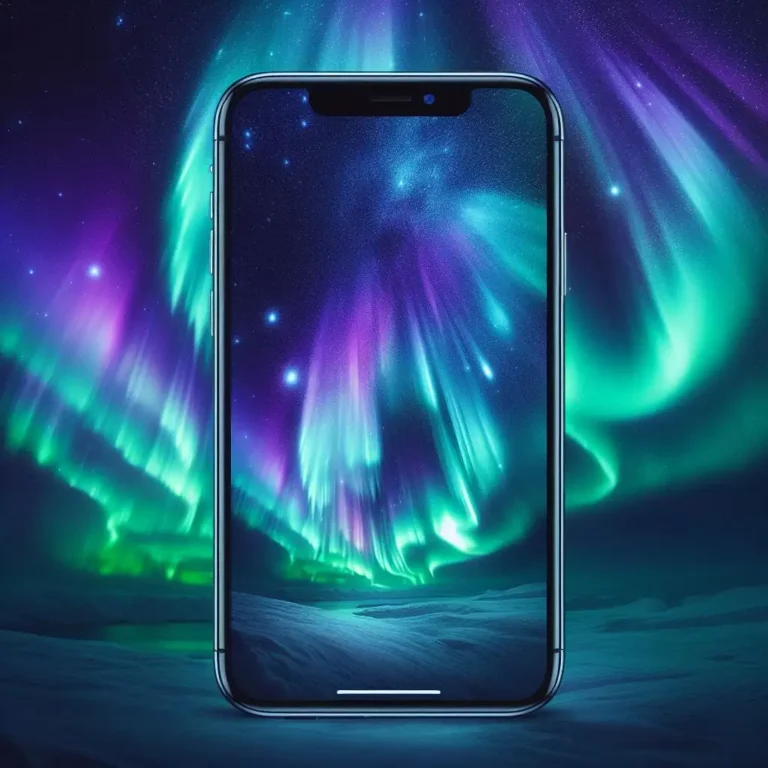How to Fix Low Resolution Photos – Unlock the Secret

Are your low-resolution photos leaving you feeling like you’re staring through a foggy window? Fear not, as there are solutions at your fingertips.
In this discussion, we will guide you through the world of fixing low-resolution photos, unveiling a range of options to enhance the quality and clarity of your images.
From simple enhancements to cutting-edge AI-powered techniques, we’ll explore the possibilities that can breathe new life into your treasured memories. But remember, not all photos can be magically transformed, and some caution is needed.
So, let’s embark on this journey together, unraveling the secrets to fixing low-resolution photos and uncovering the art behind it all.
Table of Contents
Simple Enhancements
Now let’s talk about some simple enhancements you can try to improve the resolution of your low-quality photos.
First, consider using image upscaling tools like Image Upscaler by VanceAI or websites like Waifu2x-Converter AI to enlarge and sharpen your images.
Additionally, basic photo editing software such as GIMP or Snapseed may have sharpening filters that can enhance details and clarity in slightly blurry photos.
Image Upscaling Tools:
To enhance the resolution of low-resolution photos, consider utilizing image upscaling tools for simple enhancements. These tools can help enlarge images and improve their sharpness to some extent.
Here are a few options to consider:
-
Online Tools: Free online tools like Image Upscaler by VanceAI or websites like Waifu2x-Converter AI offer image upscaling capabilities. However, it’s important to note that the results may vary.
-
Sharpening Filters: Basic photo editing software such as GIMP or Snapseed often have sharpening filters that can enhance small details and improve clarity in slightly blurry photos.
-
Noise Reduction: If noise is visible in the low-resolution image, tools like Photoshop or Lightroom have noise reduction features that can help smooth out the image for a cleaner look.
While image upscaling tools can provide simple enhancements, it’s important to remember their limitations. These algorithms may add artificial details, and heavily compressed or damaged images may not yield significant improvements.
Experiment with different methods and see what works best for your specific situation.
Sharpening Filters:
Consider utilizing sharpening filters in basic photo editing software like GIMP or Snapseed to enhance details and improve clarity in slightly blurry photos. These filters work by adjusting the sharpness of the image, enhancing focus, and bringing out finer details. By applying filters to your low-resolution photo, you can enhance the overall quality and make it appear sharper and more defined. Here is a table showcasing some popular sharpening filters available in GIMP and Snapseed:
| Software | Filter Name | Description |
|---|---|---|
| GIMP | Unsharp Mask | Increases contrast along edges, creating a sharpening effect |
| GIMP | High Pass | Enhances details by accentuating edges |
| Snapseed | Structure | Adjusts the clarity and enhances details in the image |
Noise Reduction:
For simple enhancements, one effective approach to improve the quality of low-resolution photos is by utilizing noise reduction tools available in photo editing software such as Photoshop or Lightroom. These tools have the capability to reduce artifacts, smooth textures, and enhance details in the image while preserving image quality and minimizing noise.
Here’s how noise reduction can help enhance your low-resolution photos:
-
Reducing artifacts: Noise reduction algorithms can effectively reduce unwanted artifacts that may appear in low-resolution images, such as pixelation or distortion.
-
Smoothing textures: By reducing noise, the software can smooth out textures in the photo, resulting in a cleaner and more visually appealing image.
-
Enhancing details: Noise reduction techniques can help bring out finer details that may have been lost in the low-resolution image, improving the overall clarity and sharpness.
AI-Powered Techniques
Now let’s explore some AI-powered techniques to fix low-resolution photos.
Two notable approaches are Super Resolution and AI Upscaling with Denoising. Super Resolution software like Adobe Lightroom or Topaz Labs’ Gigapixel AI can analyze and enhance details to significantly improve resolution.
Tools like Remini use AI to upscale and denoise images, revealing more details while reducing noise artifacts. These techniques offer advanced solutions for enhancing the quality of low-resolution photos.
Super Resolution:
Super Resolution, an AI-powered technique, is a powerful tool for enhancing the resolution of low-quality images. With the help of advanced algorithms, Super Resolution techniques can analyze and interpolate details to significantly enhance the resolution of an image.
Here are three key aspects of Super Resolution:
-
Upscaling Algorithms: Super Resolution utilizes sophisticated upscaling algorithms that can intelligently predict and generate missing details in low-resolution images, resulting in a higher resolution output.
-
Denoising Methods: To improve the quality of the image, Super Resolution techniques often incorporate denoising methods. These methods help reduce noise artifacts and enhance the clarity of the image.
-
AI Image Enhancement: By leveraging the power of artificial intelligence, Super Resolution techniques can go beyond simple upscaling and denoising. AI algorithms can analyze the image content and intelligently enhance specific features, resulting in a more visually appealing and high-resolution image output.
Super Resolution techniques offer a promising solution for improving the resolution of low-quality images, providing users with the ability to enhance and restore the details in their photos.
AI Upscaling with Denoising:
To enhance the resolution of low-quality images, consider using AI-powered techniques such as AI Upscaling with Denoising. These techniques utilize artificial intelligence to not only upscale the image but also reduce noise artifacts, resulting in improved image quality.
AI denoising techniques help to minimize the visual disturbances caused by noise, such as graininess or pixelation, while AI upscaling algorithms increase the image size and enhance details.
The benefits of AI upscaling with denoising include the ability to reveal more details and create a cleaner, more refined image. However, it’s important to note that AI upscaling has its limitations. The quality of the final result depends on factors like the original image quality, the specific AI upscaling tool used, and the settings applied.
To optimize AI upscaling results, it’s recommended to experiment with different tools and settings, compare the output, and adjust as necessary to achieve the desired outcome.
Alternative Approaches
Now let’s explore alternative approaches to fixing low-resolution photos.
Creative cropping allows you to focus on specific sections with good detail, resulting in a smaller but higher-quality outcome.
Additionally, vectorization tools can convert low-resolution images into clean and scalable vector graphics, ideal for logos or icons.
These methods offer unique solutions depending on your specific needs and can help improve the overall quality of your low-resolution photos.
Creative Cropping:
Consider exploring the alternative approach of creative cropping to improve the quality of a low-resolution photo. By strategically selecting and cropping specific areas of the image, you can enhance details and create a visually appealing composition.
Here are some tips to effectively implement creative cropping:
-
Choosing the right aspect ratio: Experiment with different aspect ratios to find the one that best showcases the details you want to enhance. Consider square, 4:3, or 16:9 ratios depending on the subject and desired outcome.
-
Enhancing specific details: Focus on the areas of the photo that have the most potential for improvement. Crop in on those details and apply additional editing techniques to further enhance their clarity and sharpness.
-
Exploring different compositions: Don’t be afraid to experiment with different cropping compositions. Try different angles, perspectives, or unconventional compositions to create a unique and visually striking result.
Vectorization:
If you’re looking for another alternative approach to improve the quality of a low-resolution photo, consider utilizing vectorization techniques.
Vectorization is the process of converting raster images into vector graphics, which are based on mathematical equations instead of pixels.
This has several advantages, such as the ability to scale the image to any size without losing quality and the creation of clean, smooth lines.
Vector graphics are commonly used in applications like logos, icons, and illustrations, where scalability and precision are crucial.
There are various vectorization techniques available, including manual tracing and automatic algorithms.
Popular vectorization software options include Adobe Illustrator, CorelDRAW, and Inkscape.
However, it’s important to note that vectorization mightn’t be suitable for all types of images, especially those with complex textures or realistic details.
It’s essential to weigh the pros and cons of vectorization against rasterization techniques to determine the best approach for your specific photo.
Important Cautions
It is important to be cautious when attempting to fix low-resolution photos. While there are various methods to enhance the quality of these images, there are some important considerations to keep in mind:
-
Upscaling limitations: Upscaling algorithms may introduce artifacts and artificial details, which mightn’t perfectly replicate the original scene. It’s important to evaluate the effectiveness of the upscaling process and determine if the results meet your expectations.
-
Copyright considerations: When working with low-resolution photos that you don’t own, be mindful of copyright issues. Ensure that you have the necessary permissions or use images that are free from copyright restrictions.
-
Dealing with heavily compressed images: In some cases, heavily compressed or damaged images may not yield significant improvements regardless of the method used. It’s important to assess the extent of compression or damage and manage your expectations accordingly.





